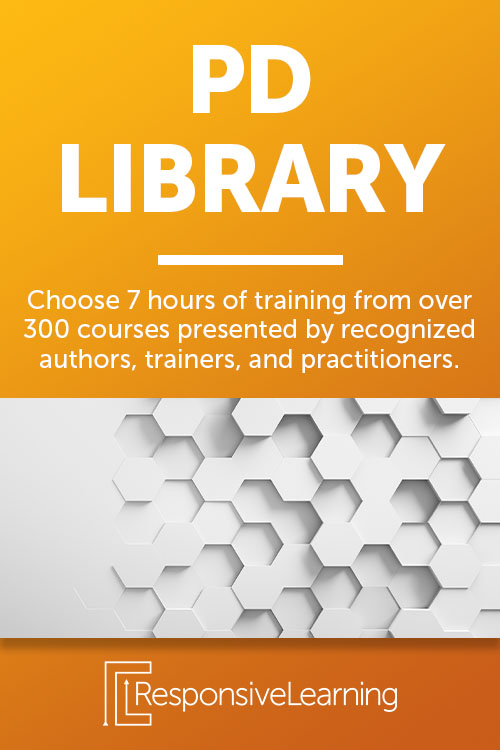Are you feeling overwhelmed with the amount of work required to effectively teach students with profound disabilities? Improved Instruction in Self-Contained SPED for Students with Significant Disabilities offers plenty of proven strategies to help. Whether you’re a seasoned special education teacher or just beginning your career, this course covers every vital piece of information you need to successfully improve your self-contained SPED instruction.
1. Optimize Instruction
Special education teacher Ayo Jones has over 20 years of experience teaching students with disabilities as well as coaching other teachers. She’s a veteran educator, author, and founder of Noodle Nook – an online resource for teachers in special education. Jones describes the three different types of instruction and what you can do to optimize your teaching methods.
Explicit instruction is used to help students learn new information and skills, especially those who are struggling with attention or memory. It involves how lessons are structured in a classroom, such as whole group, small group, and one-to-one instruction. This method uses the following six steps: name it, chunk it, model it, say it, practice it, and critique it. Incorporating these steps helps students lighten their cognitive load and focus on what’s most important.
Systematic instruction uses task analysis to break down complex skills, teaching students in sequential order. Direct instruction allows you to teach and model with guided practice, independent practice, and evaluation. All of these practices are complementary in establishing students’ skills for building independence.
2. Engaging Presentation
You must create a visual schedule to ensure that all students have a clear understanding of what they’re learning. Depending on your students’ specific needs, either checklists, personal, tactile, or first-then visuals may be better suited than others. Labels are essential in organizing and defining the classroom space as well. Be mindful not to over-clutter the area.
Jones also explains how the majority of behavior issues in the classroom “are directly related to a student not having an effective way to communicate.” You can prevent this by using the proper response mode. Incorporate a student’s augmentative and alternative communication (AAC) device into your lessons. Keep in mind that students’ response modes should always be available, and you’ll need to model the proper use for them.
Finally, movement is a great way to make your presentation engaging and fun for students. Structured movement can be incorporated through brain breaks, gestures, and relocation. Some examples include using ASL, stretching, dancing, and gathering materials for a change of pace in a different place.

3. Independent Support
When it comes to levels of support, students’ needs can range anywhere from independent to requiring full physical assistance. As a teacher, you are responsible for determining how much support is given while encouraging self-reliance. Jones emphasizes that you could discourage these skills by doing too much for your students. Give them the opportunity to demonstrate independence.
Jones clarifies how “Special Education is not a place. It is a set of services meant to support students with disabilities and give them the skills that they need, intensive interventions, and access to academics to close the gaps – not widen it.” Remember, your goal is to teach students how to become more independent. With the proper tools and strategies, you can significantly improve your instruction in a self-contained SPED classroom.
Interested in learning more about how you can improve instruction in Self-Contained SPED? Explore the course demo on Improved Instruction in Self-Contained SPED for Students with Significant Disabilities today!







